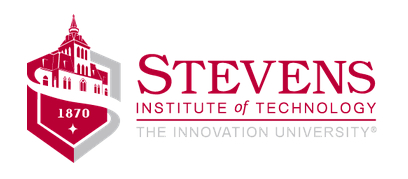
STS
Space Technology Series

STS
Space Technology Series




Understanding Space:
An Introduction to Astrodynamics and Space Systems
For more information or to register
This course provides an overview of key concepts and ideas relating to orbits and space systems design. The study of astronautics and space missions can appear difficult at times, but our goal is to bring space down to Earth – to de–mystify it, so each participant understands the big picture with confidence. We can tailor course offerings to suit your needs.
Space Domain Awareness
For more information or to register
The Space Domain Awareness (SDA) ebook provides a complete overview of the space domain awareness challenge and establishes basic principles, philosophies, and approaches that are useful to conduct SDA operations. These operations include, but are not limited to, detecting, identifying, tracking, and characterizing objects and their behaviors, detecting changes associated with selected RSOs, and potentially mitigating threats.
Introduction to Aerospace at NASA
For more information or to register
This interactive course provides an overview of key concepts and ideas relating to the total NASA mission, to include aeronautics and astronautics. The study of both topics during the week allows new professionals the opportunity to recognize that the two topics are tied together and straightforward. Our goal is to bring spacecraft and airplanes down to Earth, so each participant understands the big picture. The material for this seminar comes from those who have been there; and, done that.
TeachSpace
For more information or to register
This highly interactive course was developed in a joint effort between TSTI and Embry-Riddle Aeronautical University (ERAU) in response to a need from NASA. The team created a one-week class to assist high school teachers with the issue of "How do I bring space into my classroom." It provides an overview of key concepts and ideas relating to orbits and space systems design. The team brings space down to the high school level to ensure understanding of the big picture. Travel is required. The course is taught at various ERAU campuses across the country.
Designing Space Missions and Systems:
An Integrated Systems Engineering Approach
For more information or to register
This course examines the entire space mission design and operations discipline. It is designed for systems engineers and project managers responsible for the detailed design and operation of space systems. Emphasizing a process-oriented approach, the course examines both spacecraft design and mission operations in depth. Interactive discussions presents practical spacecraft design using detailed concepts and tools to analyze and design the space segment required to support robotic missions, including architecture and configuration, payloads, and vehicle subsystems. Focus on mission operations include the functions to be performed, examine key issues, develop an operations concept, and assess complexity and cost of operations. Emphasis is placed on describing the interrelationships and tradeoffs between system design and mission operations. This is a hands-on course with a focus on applications. Design exercises are conducted to give first-hand experience with the techniques presented.
Human Spaceflight:
Mission Analysis and Design
For more information or to register
This course is designed to provide the conceptual framework for developing crewed space missions starting from a blank sheet of paper. It describes the crewed space mission design and analysis process. It begins with the fundamentals of the operating environment for near-Earth orbits, the Moon, and Mars. The course describes human physiology, behavior, and design factors in those environments, and analyzes the orbits and trajectories required to perform crewed missions. It provides practical, detailed concepts and tools to analyze and design both the space and planetary segments required to support crewed missions, including architecture and configuration, life support, vehicle subsystems, entry, landing, and ascent vehicles, habitats, surface vehicles, and in-situ resources. This course covers space propulsion systems and highlights the process to select the launch systems required to place space assets into the proper orbit or landing destination. Students will study the mission operations segment to include operations in space, Earth-based operations, and command, control and communication.
Hands-On Space Mission Design Exercise
For more information or to register
Learn by doing! Adopted by NASA Headquarters as the NASA Engineering Training (NET) Design Exercise
Participants will be divided into competing groups and given real-life mission objective to conceptually design a mission and systems to meet objectives at an acceptable lifecycle cost. Each group will use a structured systems engineering approach to develop a mission concept and supporting architecture to meet the stated mission objectives. Participants will use the references and tools that they bring to the exercise, resources available in your design center, and resources provided by TSTI. Each group is expected to develop a credible design, perform a lifecycle cost estimate, and identify critical requirements and system drivers for their concept. The product of the exercise is a one-hour presentation of a technical proposal where participants will be expected to defend their design decisions. Each participant will receive feedback on their interpersonal and team leadership skills as well as their technical design.
Space Systems Verification and Validation:
A Satellite Hardware Laboratory
For more information or to register
This course is intended to provide participants with the processes, information, and tools necessary to implement a credible validation, verification, integration and test program. Using a fully functional (though not space qualified) satellite, participants will be exposed to NASA and DoD standards, lessons-learned, tools and experiences in validation and verification. The EyasSAT™ benchtop satellite has all of the major subsystems of any operational satellite, and serves as a testbed/instructional tool throughout the laboratory. Teams will implement verification and validation steps as the satellite is built up from subsystem level to final system integration and test. Examples of the required documentation will be provided and analyzed by participants so they are familiar with the information they will receive from contractors and/or government offices. The course will draw from standards and processes from a variety of sources (including SP-6105, MSFC Work Instruction 8050.1e, Mil Std 1540 D, Mil HB 340A, NPG 8730.4, NPG 8705.2,), and use information from other Government and industry databases. The applicability of different standards to various missions and systems will be addressed. Participants are provided with key lectures and resources and asked to use these processes, tools and information to develop validation and verification plans and then implement them in a hands-on laboratory where they will learn by doing. To this end, participants are introduced to the hardware and software associated with a system of interest (in this case a spacecraft), along with an end-to-end set of requirements, constraints, plans and procedures.
Space Mission Operations
For more information or to register
This course defines the processes, tools, and data needed to translate space mission objectives and requirements into a viable mission operations concept. This course describes the interrelationships between mission operations elements and other segments of a space mission. It highlights the 13 operations functions, addresses key issues, provides guidelines for developing an operations concept, presents a model for evaluating the cost and complexity of conducting operations, and explains how to define and develop a mission operations system. It describes the elements associated with routine, launch, early orbit, and special operations, focusing specifically on guidelines for planning and analyzing the mission. It also describes the unique aspects of interplanetary, international, microsatellite, and crewed mission operations.
Satellite Operations – "A Day in the Life of a Satellite Operator"
For more information or to register
This course provides the participant with visibility into the actual operations of a space system. It puts the participant in the position of a consol operator who is responsible for the day-to-day execution of daily operations. The course walks through all the factors that influence the day in the life of a space operator. This would include all of the issues they would face such as orbital dynamics, space environmental effects, mission function failure, data processing, and especially the LADO issues (launch, anomaly and disposal operations). This course will emphasize DoD space operations arena with case studies and examples throughout the presentations.
UNIVERSITY AND TRAINING COURSES::